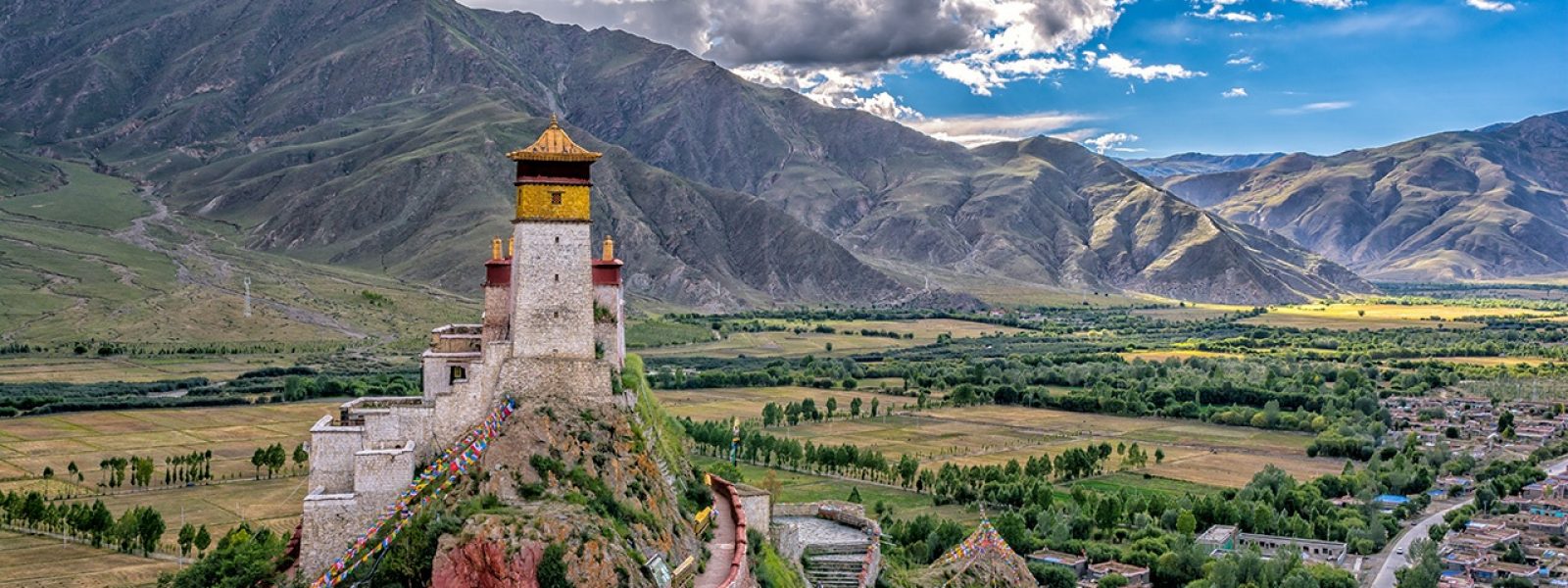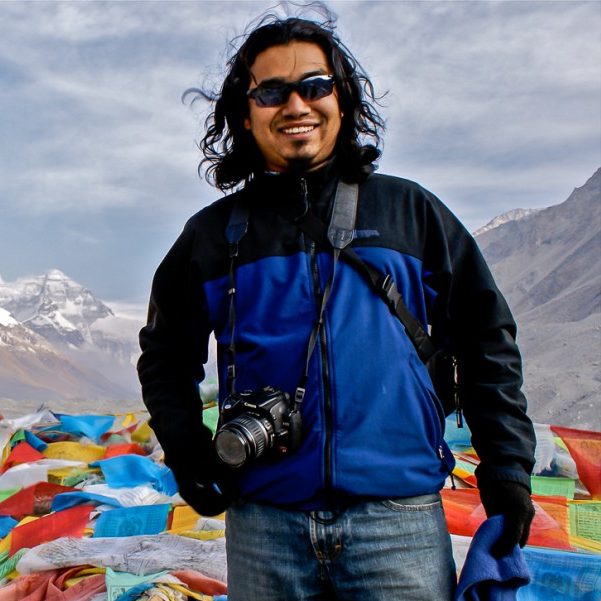About Us
Mount Everest Official combines the expertise of local Himalayan people and expert North American staff. We have spent many years exploring Tibet, Nepal, Ladakh and Bhutan and know the the very best places to go for your Himalayan adventure.
Supportive
Lorem ipsum dolor sit amet, consectetur adipiscing elit, sed do eiusmod tempor incididunt ut labore et dolore magna aliqua ut enim ad minim.
Experienced
Lorem ipsum dolor sit amet, consectetur adipiscing elit, sed do eiusmod tempor incididunt ut labore et dolore magna aliqua ut enim ad minim.
Multinational
Lorem ipsum dolor sit amet, consectetur adipiscing elit, sed do eiusmod tempor incididunt ut labore et dolore magna aliqua ut enim ad minim.

Our Story
Wanting to find a tangible and real way to help the Tibetan people, Mount Everest and Himalaya Journey owner Jamin “Lobsang” York worked for a Tibetan-run non-government organization (NGO) in the early 2000’s that had an emphasis on education and cultural preservation. The founders of this NGO, who were all Tibetan people, were mostly retired government leaders from eastern Tibet who had a deep desire to see their people be brought out of severe poverty and to see their people be given opportunities in life that previous generations didn’t have. It was difficult for this group of Tibetans to set up this NGO, but against the odds, they succeeded. The NGO then reached out to a group of Americans and British for assistance in supplying teachers at the school. That is how Jamin became involved…working as an English teacher. The school had programs for Tibetan adult students to learn how to use a computer, how to read and write their own language, how to speak and write basic Chinese and how to speak English.
The school started with just a small number of students. But word quickly spread across the Tibetan Plateau….from Amdo to Lhasa, from Kham to Everest…..that there was an English school offering extremely low tuition (in many cases, free tuition) and expert foreign teachers. After just a few years, the school had nearly 200 adult students, ranging in age from 18 to 40. Some were monks, some were nomads, some were farmers. All of them were excited to learn. Jamin spent 3 years teaching at this school and they were some of the best days of us life.
The school offered students a 2 year program that took them from beginner English level to a solid intermediate level. In addition, they took the computer, Tibetan and Chinese courses as they needed them. After the 2 year program, students were given a Certificate of Completion. For many of the students, particularly those from nomadic backgrounds, it was the first time they had ever achieved anything academically. Jamin clearly remembers one specific student, a nomad man from the Ngawa region, writing him a letter in English after his 2 year program was completed, telling Jamin how much he appreciated having him as a teacher (Jamin taught him for 4 straight semesters). Due to the huge family workload, this student had to drop out of school in Grade 4 (about age 10) to work herding the yaks. He had never returned to school. At age 23, he earned his 2 year Certificate of Completion from our school…..a moment that he (and Jamin) was immensely proud of. More than 12 years later, this former student is still one of Jamin’s closest friends.
However, one of the big problems that Jamin noticed was that even with their 2 year Certificate of Completion, it was extremely difficult for Tibetans to find jobs. Many of the students at the school were hoping to find jobs in the growing tourism industry on the Tibetan Plateau. They were wanting to work as English speaking cultural and trekking guides, private drivers catering to foreign travelers or were wanting to open small hotels and guesthouses or even open up restaurants serving Tibetan and Western food. These jobs and opportunities were definitely plentiful, but few were going to Tibetans. Most were going to Chinese who were coming from eastern China to start these businesses while employing only Chinese staff, leaving Tibetans to wonder how they could benefit from tourism to Tibet. To this day, the vast majority of tourism jobs in Tibet are NOT held by Tibetans. It is very difficult for Tibetans to find jobs working in tourism in Tibet.
So, Jamin spent about 18 months brainstorming ideas that could get Tibetan people more involved with tourism in their region and land…..More on this in a moment.

15 Years Travelling Tibet...
Any time Jamin had even the shortest break from working at the NGO (and the 2 years he spent in university in eastern Tibet before that), he would take off and go traveling across the high plateau. All of his friends were Tibetan so many times he would simply travel to their hometowns and stay with their family…..a great way to learn more about Tibetan culture. In the eastern Tibet regions of Amdo and Kham, he would use public buses to travel all through the nomadic regions like Golok, Yushu, Gannan and Tsolho. He would frequently travel to Lhasa (haha….both legally and illegally!). In the old days, the main way to get to Lhasa was by bus from Golmud. Jamin cannot tell you how many times he has taken that bus across the plateau to Lhasa! And the epic bus ride from Xining to Yushu? Yeah, he has done that route nearly 40 times…..and his body reminds him of it everyday! Finally in 2009, he bought his own 4WD vehicle so he could retire from taking those back-breaking multi-day bus journeys and drive himself around! Perhaps you have come across him driving somewhere in the remote mountains of Tibet.
Jamin traveled anywhere and everywhere in Tibet. In the early and mid 2000’s, the travel regulations for the Tibet Autonomous Region (TAR) were much different than they are today. You used to be able to make your way to Lhasa and then put together a group of travelers to go to places like Everest, Kailash, the Nepal border or even to Xinjiang. You still needed a travel agency to arrange a private vehicle for you, but permits took days to arrange, not weeks to arrange like they do now. You would simply put up notices at the popular guesthouses and hotels stating when you were leaving, how much the journey would be per person and where you were staying. So, Jamin spent every free minute traveling across Tibet. Over 16 years later, and he is STILL traveling across Tibet with any free time that he has! He has been just about everywhere in Tibet and most places he has been to dozens of times. He has traveled overland across Tibet for nearly 400,000 kilometers (250,000 miles). He now has friends in just about every remote corner of Tibet. All of the travel advice that Jamin gives to people comes directly from his own vast travel experiences in Tibet….not just from a guidebook or hearsay….but from firsthand experience.

Accurate Travel Information
Tibet, for many reasons, has always appeared to be a difficult place to travel to. There is SO MUCH conflicting information about Tibet on the internet, in guidebooks and from travel agencies. Even today, it can become overwhelming trying to figure out the travel regulations…..do you need a group tour? How do I get a permit? Can I travel by public bus? Do I have to travel with a group from the same nationality? Can I take the train to Lhasa? To be fair, guidebooks would write the updated travel regulations in their research, but by the time the guidebook actually hit the store shelves 6 months later, the travel regulations had changed a half dozen times! Certainly no fault to the guidebook companies, but still, how frustrating!
So, in 2005 Jamin started a very simple website where he would post the current travel regulations for Tibet along with info on how to get to Tibet, what travel agencies to use what travel routes to take and other helpful info to assist travelers. He would get the travel regulation information directly from his friends working in tourism in Lhasa, who were at the Tibet Tourism Bureau (government office that regulates tourism in Tibet) everyday. The other information came from his vast travel experiences. Jamin never would have imagined that his website would become so popular! His goal was simple: To assist travelers, free of charge, in planning their journey to Tibet.
Within 18 months, his simple website was getting 200+ unique visitors per day. By 2011, it was receiving nearly 600 visitors per day and he began receiving thousands of emails each year from travelers asking him for travel advice on their upcoming journey. In 2011, he updated my website and renamed it The Land of Snows. Now, he gets an average of 1200 visitors per day and over 4000 emails per year from travelers across the globe asking for assistance in getting to Tibet as well as to Bhutan, Nepal and Ladakh. He answers over 95% of these emails FREE OF CHARGE and has helped many tens of thousands of travelers get to Tibet….maybe more.
Jamin doesn’t put any annoying ads on his website, does not have a PayPal account associated with my site for people to give tips and he never charges anyone for travel advice…even for some people who send him dozens of emails while planning their trip. In fact, 90% of the time when he meets travelers in Tibet that he has assisted, he offers to buy them dinner or a drink. Jamin has a lot of joy and fulfillment in assisting travelers in visiting Tibet….his adopted home.

Helping The Tibetan People
So, getting back to the rest of the story……The students at the NGO school where Jamin worked received a Certificate of Completion after finishing 2 years of study at our school. Unfortunately, this certificate did little in assisting these Tibetan students in getting a job. Many of the students at our school did not have a diploma from high school, as they had to drop out of school at a young age to held tend the family’s yaks and sheep. Because of their lack of formal education, and due to Tibetans being discriminated against, getting good jobs can be extremely difficult. So, he came up with a plan to help the Tibetan people.
In 2006, Jamin came up with a plan to start a travel agency arranging tours across Tibet while employing students who had either graduated from the school or were in their second year of the program. By 2006, he had already traveled extensively across Tibet, knew the tourism regulations for Tibet better than anyone, had a travel blog that was becoming more and more well-known and knew plenty of Tibetans who were eager to work in tourism in their native land. His goal was to teach these Tibetans how to work in tourism and pay them a good wage.
His first company, Tibetan Connections, specialized in small-group journeys across the Tibet Autonomous Region (TAR) as well as the eastern Tibet regions of Amdo and Kham. Most of the clients were lower budget/backpacker-style travelers. The company quickly become VERY popular and our first year saw them far exceed their goals. All of Jamin’s staff were Tibetans, most of whom were either studying at the NGO school (where he still worked at while running Tibetan Connections) or had recently graduated. Many of his staff came to him with the goal of owning their own travel company. Jamin hired them, trained them and after a couple of years, happily sent them off to start their own company….not looking at them as competition, but being thankful that he was able to help them learn a business that they could continue working in.
In late 2009, Jamin sold Tibetan Connections, which is now owned by a great Tibetan guy who specializes in eastern Tibet. He sold it because he wanted to live in a different region of Tibet (Kham) and wanted to focus on more mid-range and higher end journeys in Tibet and wanted to expand to include nearby Bhutan, Nepal and India (all areas that he had also thoroughly explored). In early 2010, he started a new company, Himalaya Journey. Jamin personally leads 3 or 4 photography and cultural journeys each year through Tibet and then arranges a further 40+ private journeys per year in Tibet, Nepal and Bhutan.
As it was with his first company, all of the staff in Tibet with Himalaya Journey are local Tibetan people. As Jamin has spent nearly 15 years living in Tibet, he knows many Tibetans and choses to work with only the best. All of his guides, drivers and office staff are all Tibetans…something that few companies focusing on Tibet tourism can say. In Bhutan, all of the staff and partners are local Bhutanese…same in Nepal. Providing jobs for local Himalayan people and arranging quality journeys for clients are our 2 top objectives.

Ethical & Responsible Travel in Tibet
As stated above, the vast majority of tourism jobs in Tibet do NOT go to Tibetan people, but to Chinese people. Jamin recently did a Google search for companies specializing in tours to Tibet. Less than 30% of the top 25 companies listed were actually Tibetan owned and staffed. Many companies will try and pretend that they are Tibetan-owned and staffed by having their staff wear Tibetan clothing, but in reality, they are Chinese owned and employ mostly (if not all) Chinese staff. Every year, we see more and more foreign travelers in Tibet who have a Chinese tour guide, not a Tibetan guide. The Chinese guides, who cannot speak a word of Tibetan and know almost nothing about Tibetan culture, history and religion, regularly tell foreign clients wrong information on Tibet.
The goal of The Land of Snows and Himalaya Journey is to practice the most ethical tourism possible in Tibet so that local people benefit from you traveling there. Though Jamin is originally from the US, ALL of his staff are Tibetans. Every….single….one. In addition, our clients stay at Tibetan-owned hotels and eat at Tibetan-owned restaurants so that the vast majority of your tourism money goes directly into the hands of local Tibetan people. As we shared above, most of the top travel agencies on Google are Chinese owned. In Tibet, they have their clients stay at Chinese owned hotels rather than Tibetan-owned hotels. To us, it is an injustice that so few Tibetans can benefit from tourism. Our goal is to change that by employing only Tibetans and using as many Tibetan-owned businesses in Tibet as possible so that your tourism money goes directly to the Tibetan people.
Meet Our Team



